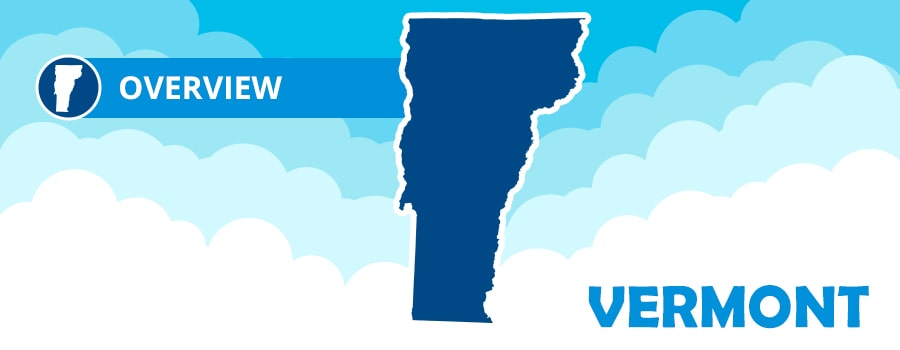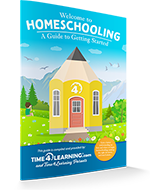Homeschooling In Vermont
Homeschooling in Vermont can be an exciting experience for both novice and expert homeschoolers alike. The beautiful Green Mountain State offers great resources, several support groups, and flexible homeschool laws for a perfect start to the joyous journey of home education. Once you have a full understanding on how to start homeschooling in Vermont, you will have an established homeschool that thrives.
We’ve compiled a list of all the things you need to ensure you have a stress-free and easy homeschool experience. By the end of this article, you will not only have a strong understanding on how to homeschool in Vermont, but you will also have a wealth of knowledge on things like educational field trips, testing preparation, curriculum planning, and more.
- How to Start Homeschool in Vermont
- Vermont Homeschooling Laws
- Vermont Homeschool Groups and Co-ops
- Vermont Homeschool Field Trips
- Vermont Standardized Testing and Test Prep
- Why Time4Learning is the Leading Homeschool Curriculum in Vermont
- How to Build the Best Homeschool Curriculum for PreK-12 in Vermont
This information should by no means be interpreted as legal advice. It is your responsibility to interpret and understand the laws that you will be homeschooling under.
How to Start Homeschooling in Vermont
To homeschool in Vermont, parents must complete the following steps:
- Submit a Home Study Enrollment form every year
- Submit an Independent Professional Evidence Reporting Form (if your student has not been previously enrolled in public school)
- Submit a Minimum Course of Study (MCOS) form
- Submit an End of Year Assessment after your second year of enrollment
- Keep good records
- Have fun learning together!
Welcome to Homeschooling Guide
Download this FREE resource where experienced homeschoolers share their stories for how to begin homeschooling, understanding your child academically, planning your days, and much more.
Vermont Homeschooling Laws
Homeschooling in Vermont requires parents to submit a Home Study Enrollment form every year they decide to provide a home education to their child. This form should be signed by two parents, or legal guardians and should include the Independent Professional Evidence Reporting Form, as well. If parents are removing their children from public school, they should provide a report card, in lieu of the IPER form. Additionally, parents should also submit a Minimum Course of Study form, and an End of Year Assessment after their second year of enrollment.
To learn more details about the legal requirements for homeschooling in Vermont, visit our Vermont Homeschooling Laws page.
Vermont Homeschool Groups and Co-ops
Whether you’re reading this page as an experienced homeschooler or as a parent ready to embark on this homeschool journey for the first time, you will want to know the different types of homeschool organizations that are available to you. Vermont homeschoolers have a variety of homeschool support groups and co-ops to choose from. From faith-based to secular and beyond, these groups serve as a way to connect, share, and create memories with others. By exploring educational goals, learning styles, and curriculums in an intimate family group-like setting, parents can share their experiences together.
To learn more about these support groups and co-ops, visit our Vermont Homeschool Groups and Co-ops page.
Vermont Homeschool Field Trips
The educational explorations of the Green Mountain State are abundant! Combining academic concepts with Vermont’s outdoor classroom will not only give your child an enriching homeschool experience, but will also reinforce lessons in your homeschool curriculum.
To browse all the field trips opportunities in the Green Mountain State, visit our Homeschool Field Trips in Vermont post. Please make sure to contact each site before you plan your visit, as COVID-19 may have impacted their hours of operations.
Vermont Standardized Testing and Test Prep
Vermont homeschooling laws require parents to submit End of Year Assessments after the second year of enrolling their children in home education. This is required in order for parents to assess the progress of their students based on the subject areas listed on the Minimum Course of Study form.
Parents of traditionally schooled students also rely on Time4Learning to prepare their students for upcoming tests. Learn more on our Vermont State Test Prep page.
Why Time4Learning is the Leading Homeschool Curriculum in Vermont
Homeschoolers in Vermont have the freedom to choose the curriculum they prefer. With the increase in popularity of homeschooling and the prevalence of technology in everyday life, many families are turning to online homeschooling curricula.
Since Vermont homeschoolers are required to keep good records and submit end of year assessments, it is important to choose a homeschool program that will address these requirements.
Many homeschoolers in Vermont have chosen Time4Learning as their core homeschool curriculum and here’s why:
- Coursework correlates with state standards and includes all core subjects of math, social studies, science and language arts at a highly competitive price.
- Quizzes and tests are built into every course to assure comprehension and mastery.
- Our curriculum promotes critical thinking and problem solving skills all while children are learning independently.
- Automated grading and reporting system frees up your time so you can focus on other areas of homeschooling.
- Students can progress through each subject on their time and can access one grade level above or below their current level.
- Additional supplemental educational electives are available for an additional fee.
- Self-paced lesson plans and ability to repeat lessons make sure students master all concepts before moving on.
- Access to tons of printables and engaging activities to keep your child eager to continue learning.
How to Build the Best Homeschool Curriculum for PreK-12
We understand how stressful it can be to find the right homeschool curriculum for your child, especially if you are new to homeschooling. It seems like there are endless options available. So how do you know which one is right for your child? How do you even find the time to research each one?
Being familiar with your child’s learning style is the first step in helping you make an informed decision. Many parents also find that one program is usually not the answer, which is why many families end up mixing and matching various homeschool programs to give their children a more thorough learning experience. Learn more about how to build the best homeschool curriculum for PreK-12.
Vermont Unit Study Supplement
Help your homeschooler learn interesting history and geography facts about Vermont in the Time4Learning unit study supplement.
Online Curriculum for Homeschool, Afterschool and Summer Use
In addition to being an award-winning choice for homeschool families, Time4Learning also offers an online after school program to help build your child’s skills. View our lesson demos and discover why thousands of families in Vermont are already using it!
Give your student the chance to get back on track or explore exciting electives and get ahead for the next school year with Time4Learning’s online summer school. Our educational materials will engage and challenge your child to succeed.








